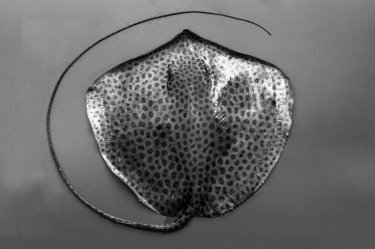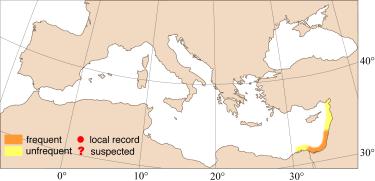
|
Relevant synonyms
Misidentification
|
|
| photo : David Darom |
|
SHORT
DESCRIPTION
color :
upper surface light brown to greyish-yellow with numerous dark brown spots. Lower surface white.
size :
common disc diameter 40 - 120 cm (max. 50 cm). |
DISTINGUISHING CHARACTERISTICS
Rajidae: body covered, at least partially, with prickles and/or thornlets; no whip-like tail.
BIOLOGY / ECOLOGY
habitat :
inhabits sandy or muddy substrates at depths to 50 m. Known as a euryhaline species often penetrating estuaries. |
|
1st
MEDITERRANEAN RECORD
|

|
|
DISTRIBUTION
|
ESTABLISHMENT SUCCESS
speculated reasons for success :
|
|
|
MODE OF
INTRODUCTION |
IMPORTANCE TO
HUMANS |
|
KEY
REFERENCES
|
 Trygon uarnak
Trygon uarnak